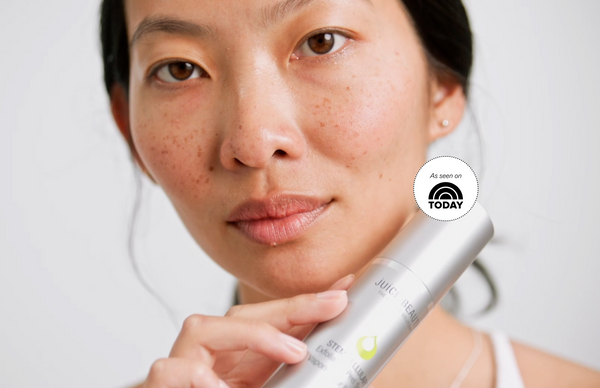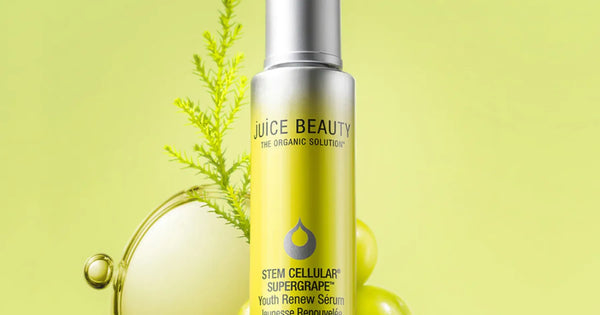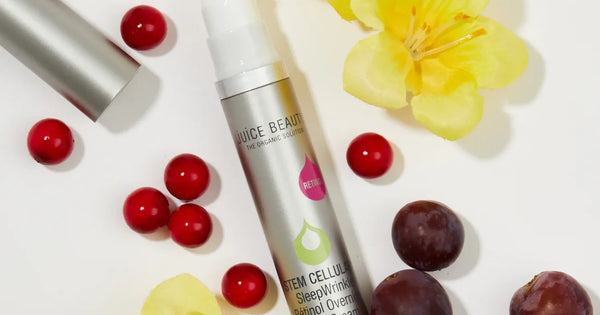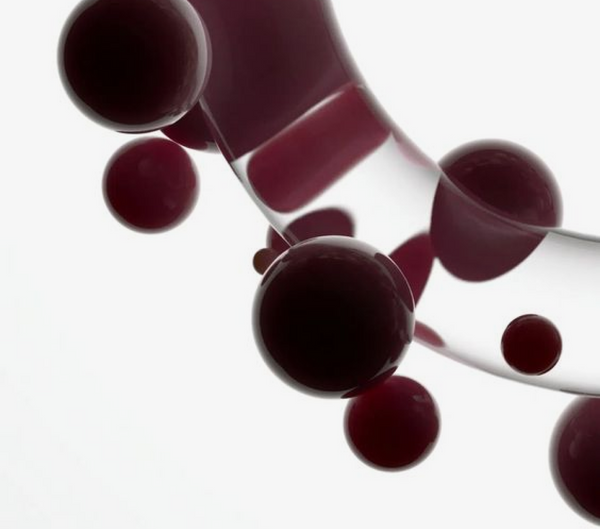Ready to say goodbye to dry, flaky skin? Dry skin can be irritating and hard to get rid of at times, so nailing down your skincare routine is crucial.
Follow our guide to the best skincare routine for dry skin and rid yourself of dryness, irritation, and discomfort.
What Causes Dry Skin?
Whether you have chronic dry skin or experience bouts of dryness, it can be helpful to explore the possible causes. Though there are countless causes of dry skin, the following are the most common reasons for dryness.
Environmental Factors
Climate and certain weather conditions are very common factors that contribute to dry skin.
Constant exposure to dry, hot climates, for example, can cause skin dryness because the warm weather draws excessive water loss from the body, which can lead to skin dehydration. Excessive sun exposure can also damage skin, making it harder to hold in moisture.
Other weather factors play a role as well, however. Wintertime is a hub of skin dryness — cold air contains less moisture, making the air chilly and dry. Frigid weather combined with wind makes it very easy to develop dry, cracked skin during the winter months.
Skin Conditions
Clinically diagnosed skin conditions can certainly cause dry skin and might require additional guidance from your doctor and dermatologist to get to the root of the issue. Even still, maintaining a skincare routine designed to target dry skin can help alleviate irritation caused by certain conditions.
Eczema, also known as atopic dermatitis, is a condition that causes skin irritation, making certain areas of the skin and complexion dry, itchy, and bumpy. Psoriasis is another skin condition that causes scales and itchy dry patches.
Medical conditions like these might require a doctor’s attention in addition to an effective skincare routine.
Soap
Certain soaps can also contribute to dry skin. The next time you reach for a bar of soap, check the ingredient list to avoid sulfates, ethyl, and alcohol. These ingredients are strong and can successfully remove dirt and grime from the skin — but at a cost. Especially if you have sensitive skin, these ingredients can strip the skin of natural oils, making it dry and itchy.
If you have particularly sensitive skin, it may also be helpful to avoid artificial fragrances, which may contribute to skin reactions and more dryness. Instead, opt for skin cleansers with natural ingredients like aloe, cocoa butter, shea butter, and glycerin, as they can help hydrate the skin while still removing buildup.
Aging
As you get older, you might notice your skin becoming dryer. Aging can lead to dryer skin because you experience more water loss, and your skin barrier’s functionality reduces over time. The skin also loses elasticity over time, which can contribute both to dryness and visible signs of aging like fine lines and wrinkles.
You cannot entirely avoid aging, but you can minimize dry skin and visible signs by following a well-rounded skincare routine.
What Are Some Key Active Ingredients for Dry Skin?
The natural skincare products you choose can make or break your skin’s health, which is why it’s so important to seek out products with nourishing, hydrating ingredients.
There are loads of buzzy active ingredients in the skincare sphere, but the following list is great for targeting skin dryness and hydration:
- Hyaluronic Acid: An active ingredient often found in serums and moisturizes, as it successfully hydrates the skin and helps lock in moisture from other hydrating skincare products.
- Lactic Acid: An AHA (alpha-hydroxy acid) that helps to gently exfoliate and provide smoother skin.
- Glycerin: A humectant that attracts and binds to water, making it a great ingredient to help moisturize the skin.
- Ceramides: Fatty acids that strengthen the skin’s barrier and keep moisture locked in, helping to prevent dry, broken skin.
When you develop the perfect skincare routine for your skin type, always seek out active ingredients like the ones listed above. Knowing what ingredients aid in preventing skin dryness is the first step. Let’s now explore the best skincare routine for dry skin.
What Is a Good Skincare Routine for Dry Skin?
Dry skin can be a nuisance, but our recommended skincare routine can help nourish and replenish your skin. This routine is best for dry skin, but should also be used as a guide for sensitive or acne-prone skin.
Following this routine can help brighten, hydrate, and smooth the skin.
1. Cleanse
The first step of every skincare routine should always be to cleanse. Washing and rinsing the face with a hydrating cleanser removes dirt, makeup, and grime buildup from the skin’s surface.
Removing all that buildup prepares the skin for serums to better absorb into the skin and do their jobs effectively. It’s best to cleanse both morning and night — cleansing at night specifically allows the skin to breathe and replenish itself overnight.
Clogged pores and excess buildup on the skin can cause dryness, so it is crucial to cleanse the face and remove that grime so the face can receive moisture and properly lock it in.
For great results, we recommend the Stem Cellular 2-In-1 Cleanser. This gentle cleanser successfully removes makeup and even helps tone the skin (the next step in a hydrating skincare routine).
Made from nourishing ingredients like grape seed oil, aloe juices, and antioxidants, this cleanser washes and replenishes, leaving a perfect base for the next skincare steps.
With Juice Beauty’s Bio70+ technology, all of our products start with an antioxidant-rich base of at least 70% organic ingredients, creating the ideal environmet for our potent actives.
2. Tone
Toner essentially finishes the job of a cleanser by removing any remaining dirt, makeup, and other impurities that the cleanser may have left behind. Toners also provided targeted benefits and aid with skin hydration, as many toners are mostly water-based.
Keeping your skin clear of dead skin cells and other buildup is crucial to prevent skin dryness. It allows the skin to replenish itself and lock in moisture — excess buildup can hinder skin cell turnover and skin barrier function, so incorporating toner into your routine is a great way to promote hydration.
Toner infuses nutrients into the skin and better prepares it for your other skincare products, like serums or exfoliants.
3. Target
After you cleanse and tone your skin, the next step is to target specific skin concerns with serums.
For instance, if minimizing blemishes is a high priority, you might apply a serum that targets breakouts and spot treatment. Or, target the visible signs of aging by incorporating a serum with ingredients aimed at minimizing the look of fine lines and wrinkles.
Serums take your skincare routine to the next step by addressing specific skin concerns that might need extra attention outside of cleansing and toning.
Since our goal is to minimize skin dryness, we recommend Juice Beauty’s Prebiotix Freshly Squeezed Glow, 20% Vitamin C Serum.
This serum is clinically certified, with 100% of participants reporting revitalized skin, 96% confirming they liked the glow the product provides, 96% agreeing their skin looked brighter, and 100% agreeing the serum is great for sensitive skin.
4. Moisturize
The next step is to lock that hydration in with a moisturizer. Moisturizing is a crucial step, especially in the fight against dry skin.
Using a hydrating lotion or cream supports the integrity of your skin barrier, which protects your skin and keeps it balanced. Moisturizing is especially important after using a serum because it works as a seal, locking in all the benefits of your previous products.
When it comes to hydrating lotions, we love the Prebiotix C-Boost72 Hydrating Whipped Cream. This hydrating moisturizer utilizes vitamin C to brighten and even skin tone, niacinamide to promote smooth, clear skin, and a skin barrier hydration blend. This product is clinically proven to increase skin luminosity with just four weeks of use.
5. Protect
The final step of any skincare routine is to protect your skin from the sun’s UV rays with sunscreen. Sun damage can threaten your skin’s integrity by aging it faster, increasing dryness, and making it more susceptible to health risks like skin cancer. The best way to avoid those dangers is by regularly applying sunscreen with at least SPF 30.
We recommend using the Stem Cellular CC Cream Zinc SPF 30 as a daily sunscreen treatment. This product is versatile, as it doubles as sunscreen and tinted moisturizer, providing ample coverage and evening out the skin tone. Using this CC cream every morning will even your complexion and minimize potential sun damage.
Smooth and Soothed
Dry skin is frustrating, but can be managed. With our guide to perfecting your skincare regimen for dry skin, you can see noticeable differences over time.
Sources:
Dry skin in dermatology: a complex physiopathology | NCBI
Skin Care and Aging | National Institute on Aging
Sunscreen: How to Help Protect Your Skin from the Sun | FDA
Topical Vitamin C and the Skin: Mechanisms of Action and Clinical Applications | PMC






